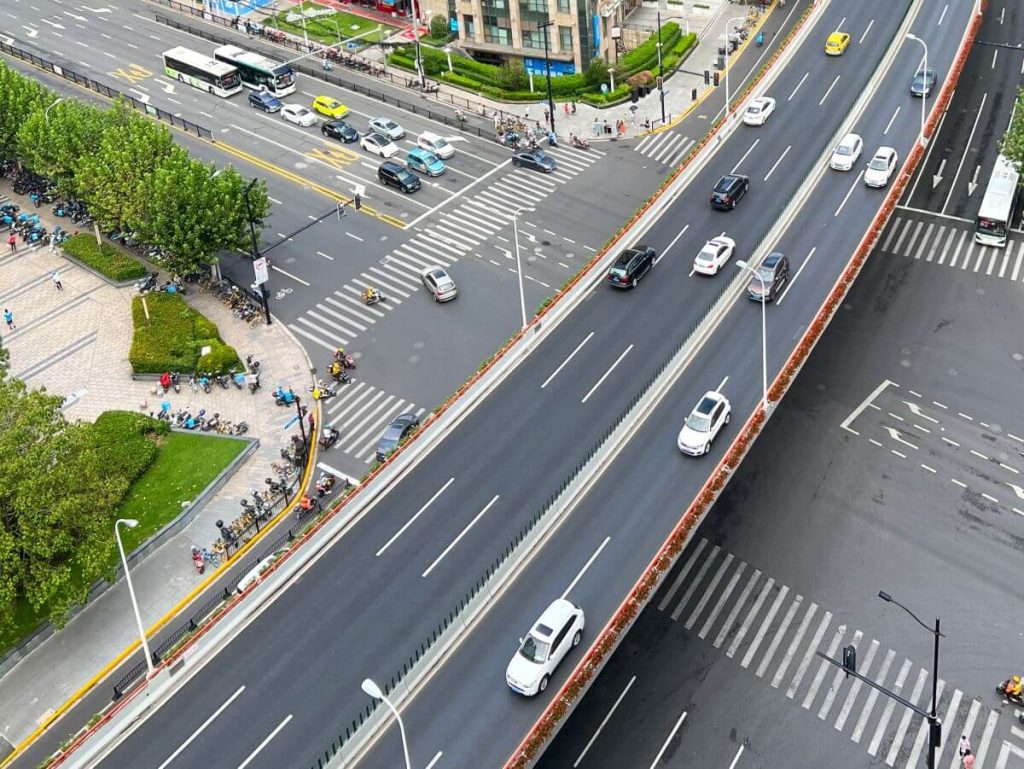
Transport interchange - what is it? What does the SDA say about priority at an equivalent intersection? Information for drivers!
Content
- Crossroads - what is it? Get a definition
- Types of intersections by shape
- Types of intersections depending on the way of driving. Who has priority?
- Types of road crossings and difficulty of travel
- How to learn intersections and drive by the rules? What signs do you need to know?
- Crossroads and safe driving - summary
If the intersection is known to the driver, it is easier to navigate through it. It becomes more difficult when you have to enter an unfamiliar area of the city or the organization of traffic changes in a given place. Basic knowledge of identifying intersections and crossing them will always come in handy, even if you are not a professional driver.
Crossroads - what is it? Get a definition

Can this term be described as "crossing the streets"? According to the Road Traffic Act, Art. 2 paragraph 10, an intersection is “a level crossing of roads with a carriageway, their junction or junction, including the surfaces formed by such intersections, junctions or junctions […]”. The definition of an intersection also includes the intersection of two dirt roads.
However, it is worth knowing what the intersection is not. We are talking about the intersection, connection and fork of the carriageways, one of which is a dirt road, an internal road or an entrance to a site of a building standing next to the road.
Types of intersections by shape
Even if you don't drive, you'll probably notice that not all intersections look the same. In addition to the design itself, there are different types of road junctions. Types of intersections in shape can be determined by the letters of the alphabet:
- X-shaped;
- Y-shaped;
- T-shaped;
- O-shape (round connection).
Types of intersections depending on the way of driving. Who has priority?
What types of intersections can be distinguished by this criterion? In this case, we are talking about the direction of movement, determined by the priority or method of direction of movement. According to this division, an intersection can be:
- collisionless - in this case, the movement in each lane and in each direction does not imply the intersection of the direction of movement by other road users. The S-3 direction signal is usually a useful tool;
- equivalent - this type of intersection or fork in the road does not provide for a predetermined, variable way of driving. At the entrance to the intersection, the car that appeared on the right has the advantage. At such an intersection ambulances and trams have priority regardless of the direction of travel. On the other hand, a left-turning vehicle must always give way to a right-turning vehicle going straight ahead;
- unequal - this is an intersection where signs determine priority;
- directed - in this case, the right of way is determined by the traffic light;
- road junction - a method of routing roads, allowing to varying degrees to change the direction of movement;
- road crossing - a multi-level intersection without the possibility of choosing the direction of movement.
Types of road crossings and difficulty of travel

Why can the above examples of intersections cause problems for drivers? There are at least several reasons, but one of them is ignorance of the rules. They are defined by the Rules of the Road, and vertical and horizontal signs inform about their use. The markings of the intersections are so clear that there should be no difficulty in deciphering them. However, it is worth noting that not only ignorance of the rules is the cause of collisions and accidents. They also include non-compliance with recommendations.
How to learn intersections and drive by the rules? What signs do you need to know?

Are you wondering how to learn intersections so that you no longer have doubts? In principle, the easiest intersection is the one where the direction and time of movement are determined by traffic lights. Problems arise when the intersection of roads is conflicting and uneven. Then you need to remember that in the case of the intersection of equivalent intersections, the rule of the right hand prevails. The one walking on the right has the right of way. Secondly, the tram and the emergency vehicle go first, regardless of direction.
Another issue is to observe road signs. For example, a red STOP sign is placed at places where it is absolutely necessary to stop and also give way to other vehicles. Failure to stop may result in a sudden shutdown resulting in a collision or accident. At intersections built on motorways or bypasses, watch for vertical and horizontal signs because the direction of traffic is usually constant and there is nowhere to stop. You may still encounter drivers who are driving in the wrong direction on expressways or motorways, which is a great danger..
Crossroads and safe driving - summary

What else do you need to remember? Keep in mind that an intersection is not a place to stop unless there are collisions. This place on the road must be left smoothly and as quickly as possible. Obey speed limits and traffic conditions and you'll be fine.
